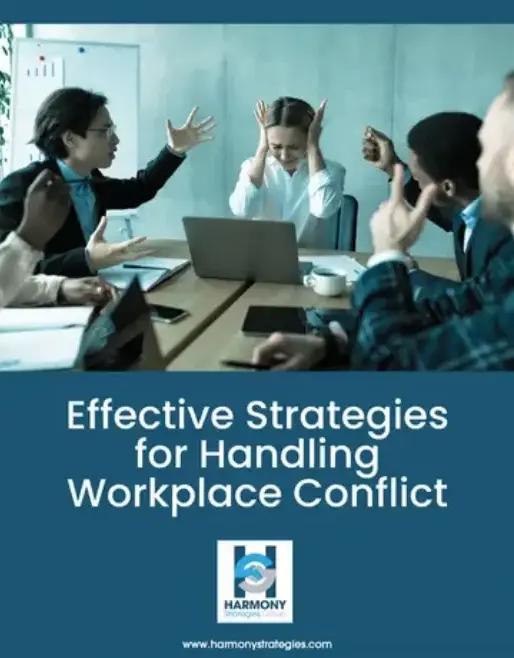Human capital risk isn’t just about turnover and who quits – it’s about what gets lost, before and as the talent leaves.
Conflict. Burnout. Disengagement. Microaggressions. Silos. Missed feedback loops. These are often the quiet tremors that signal deeper human capital risks within an organization. Left unaddressed, they compound while silently undermining retention, morale, innovation, and performance.
For years, organizations have tried to respond to these challenges through formal channels like HR, compliance, or even legal teams. But these systems, while critical, often fail to catch what simmers beneath the surface. That’s where a lesser-known but powerfully strategic role comes in: the Organizational Ombuds.
What Is an Organizational Ombuds? (…and how is it different from HR?)
An Organizational Ombuds is a neutral, confidential, informal, and independent resource within an organization. The role helps employees, managers, senior leadership, and sometimes external stakeholders surface concerns, navigate conflicts, identify weaknesses, and explore options, all outside of formal reporting channels.
Unlike HR, which is typically aligned with organizational policy enforcement and performance management, an Ombuds doesn’t take sides or advocate for the company or the employee. Rather, they listen, coach, identify patterns, and support people to be proactive with constructive ways forward.
According to the International Ombuds Association (“IOA”), a key strength of the Ombuds role lies in its informality and confidentiality, which makes it uniquely positioned to handle issues people might not feel safe sharing elsewhere.
Spotting Risk Before It Becomes a Problem
Human capital risks often start as quiet discomfort, the kind that rarely shows up in exit interviews or annual surveys. An Ombuds serves as a kind of early detection system, identifying patterns that might otherwise remain invisible.
What they see:
- Consistent concerns about a particular team dynamic or manager.
- Repeated themes around psychological safety, inclusion, or workload.
- Systemic inconsistencies or unfairnesses.
- Communication gaps.
- Questions employees are afraid to ask in public forums.
The power of the Ombuds is not just in helping with individual conversations, but rather in their ability to identify themes and patterns and liaise with senior leadership to consider what to do about them. Surfacing underlying issues can inform leadership strategy without breaching confidentiality.
The hidden cost of workplace conflict is over $350 billion annually in the U.S. An Ombuds helps reduce these costs before they escalate.
The Ombuds ROI: Retention, Clarity, Engagement, and Trust
In a 2019 study published by Mary Rowe, a pioneer in the ombuds field (see References), organizations with Ombuds programs reported increased employee trust, reduced formal complaints, and greater leadership insight into systemic challenges. The Ombuds wasn’t just a reactive resource; it helped foster a culture of responsiveness and self-reflection.
Mary points out that, “employees don’t need every issue to be ‘fixed’—they need to feel heard and respected. That alone reduces attrition.” (Rowe, 2019)
In this way, the Ombuds can be a key retention lever. By offering a confidential space to talk, think through problems, and feel validated, employees are more likely to stay and engage, even through tough transitions.
A Strategic Partner for Leadership
From a leadership perspective, an Ombuds acts as a barometer of organizational health.
When tensions rise, the Ombuds can identify where small adjustments (like communication clarity or better feedback loops) would prevent major fallout. When systemic issues emerge like a lack of inclusivity or repeated conflicts between departments, the Ombuds can advise on systems-level interventions that support sustainability.
Many Ombuds are also trained in conflict coaching, systems design, and facilitative listening, which positions them to help organizations build cultures of accountability without policing or punishing.
The Need to Act
In the wake of pandemic-related disruption, DEI pushback, and remote/hybrid work challenges, human capital risk is at an all-time high. The 2023 Gallup State of the Global Workplace report found that only 23% of employees are engaged, and stress levels remain elevated across sectors.
Organizations that wait until issues escalate into grievances, PR nightmares, or lawsuits pay a steep price. The Ombuds is a preventative investment that offers not only conflict resolution, but conflict literacy.
It’s not just about avoiding risk. It’s about building a culture where people feel safe to speak, grow, and stay.
What to Do Next
If your organization seeks to maintain or improve productivity through change or culture transformation and ensure workplace team resilience, an Ombuds should be an essential part of your leadership team.
At Harmony Strategies, we work with organizations to design Ombuds programs tailored to your structure, size, and goals and offer outsourced Ombuds support when internal capacity is limited.
Reach out to explore how we can help assess your risks and strengthen your people systems.
References and Resources
TED Talk: How to Disagree Productively and Find Common Ground – Julia Dhar
Blog: The Hidden Cost of Workplace Conflict – Ryan Dunlap (2023)
Gallup Report: State of the Global Workplace
IOA Article: Why an Organizational Ombuds?

